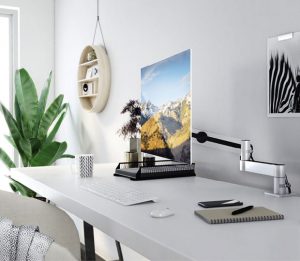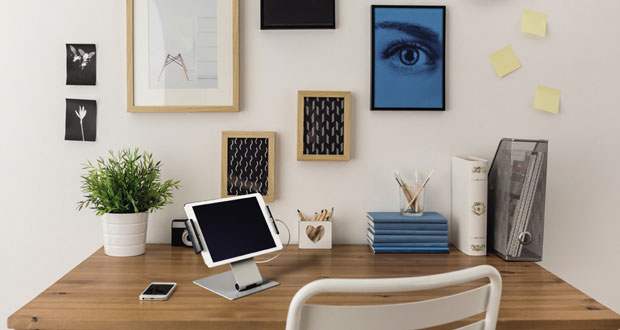What began as a short-term response in March 2020 has morphed into a way of life for millions of office staff who continue to work from home. Sam Rylands, Marketing Manager for DURABLE warns that the quality of the ergonomics on offer must equal that of the workplace
It’s fair to say that life has become more difficult for everyone this year. Coronavirus has changed many aspects of our lives and we have all had to adjust to new ways of living and working. Six months ago, businesses had to act quickly and adapt to flexible working. Six long months and countless video calls later, the latest announcements have outlined that it could last for another six months. So where does this leave the traditional office working 9-5 ?
According to the Office for National Statistics, still only half of UK workers had returned to their workplace by the end of August, with many still working from home or splitting their time between home and the office. Unsurprisingly, remote working is now a reality and will be part of the foreseeable future, the new normal if you will.
This has inevitably changed the roles of FMs dramatically as the shift moves towards more permanent home working which brings with it an array of different challenges and hurdles to overcome.
Whilst many had set up temporary workspaces in their homes when lockdown started, this is no longer a short-term arrangement, and many companies are already integrating this new way of working into their business models. That being said, it takes more than a laptop to set up a home office so it’s up to FMs and employees to work this out together.
WORKPLACE ERGONOMICS
We know that our working environments have a huge effect on us and similarly, employees need the correct tools to do their jobs effectively. Uniting these two aspects for home working can be challenging, but innovative new solutions including products and technology are enabling businesses to fully embrace new working patterns, including remote working.
Establishing what people require to be set up to work from home effectively is the first step to implementing a good home working practice. FMs are familiar with ensuring employees are set up correctly with the required products in the office. The challenge now is for FMs to understand what is necessary for employees at home. There is one important thing to bear in mind and that is ergonomics for home working.
Ergonomics is the process of designing or arranging workspaces and using products that enhance productivity, comfort and health. Creating an ergonomic workspace will not only provide employees with a comfortable workstation, a home from home away from the office, but also create a positive working environment.
Often when we hear of workspace ergonomics we think about positioning and posture. Yes, a good office chair or one that supports posture is essential for workers, the kitchen stool or dining chair will not suffice for long-term working from home arrangements. Not only do workers need to feel comfortable in their new working environment, but this also leads to less health issues in the future. Given that the majority of UK workers were office- based in the past, many staff will also not be working on a suitable or dedicated office desk, so proper ergonomic positioning must be passed onto employees by FMs. For an ergonomic sitting position, elbows and knees should be at a 90-degree angle, and the top of the screen should be exactly at eye level.
 There are certain products FMs can draw on to support with this. Many UK workers without a home office set up are working on laptops, which leads to working hunched over, causing back and neck pain and general discomfort after long periods of time. Using a monitor mount keeps posture at the correct angle and using mounts which support multiple screens boosts productivity. This could be something that FMs can provide staff with to help them maintain a good ergonomic posture whilst working from home.
There are certain products FMs can draw on to support with this. Many UK workers without a home office set up are working on laptops, which leads to working hunched over, causing back and neck pain and general discomfort after long periods of time. Using a monitor mount keeps posture at the correct angle and using mounts which support multiple screens boosts productivity. This could be something that FMs can provide staff with to help them maintain a good ergonomic posture whilst working from home.
But it’s not just about the desk and chair. Choosing the correct working environment can also help workers to be more productive when working from home. For example, encourage employees to set up a dedicated home office area, as this can provide mental distance from home life. Not everyone has the luxury of such space, so there are other things you can suggest to create the ideal working environment.
We might not realise it, but light has a significant impact on processes inside the body. It regulates the production of various hormones including the sleep hormone melatonin, which ensures that we relax in the evening and encourages us to fall into a refreshing sleep. Raconteur(i) recorded in 2018 that 40 per cent of 7,000 employees surveyed are working in poor lighting every day which was having a negative impact on their performance – and that’s in the office. Working side on by a window is the optimal place for light to balance with your circadian rhythm. Failing that, human-centric lighting solutions such as LUCTRA replicate the motion and colour spectrum of the sun, which maintains the body’s healthy circadian rhythm, leading to more productive, happy and healthy employees. Encourage your staff to set up their home office using the best possible light.





